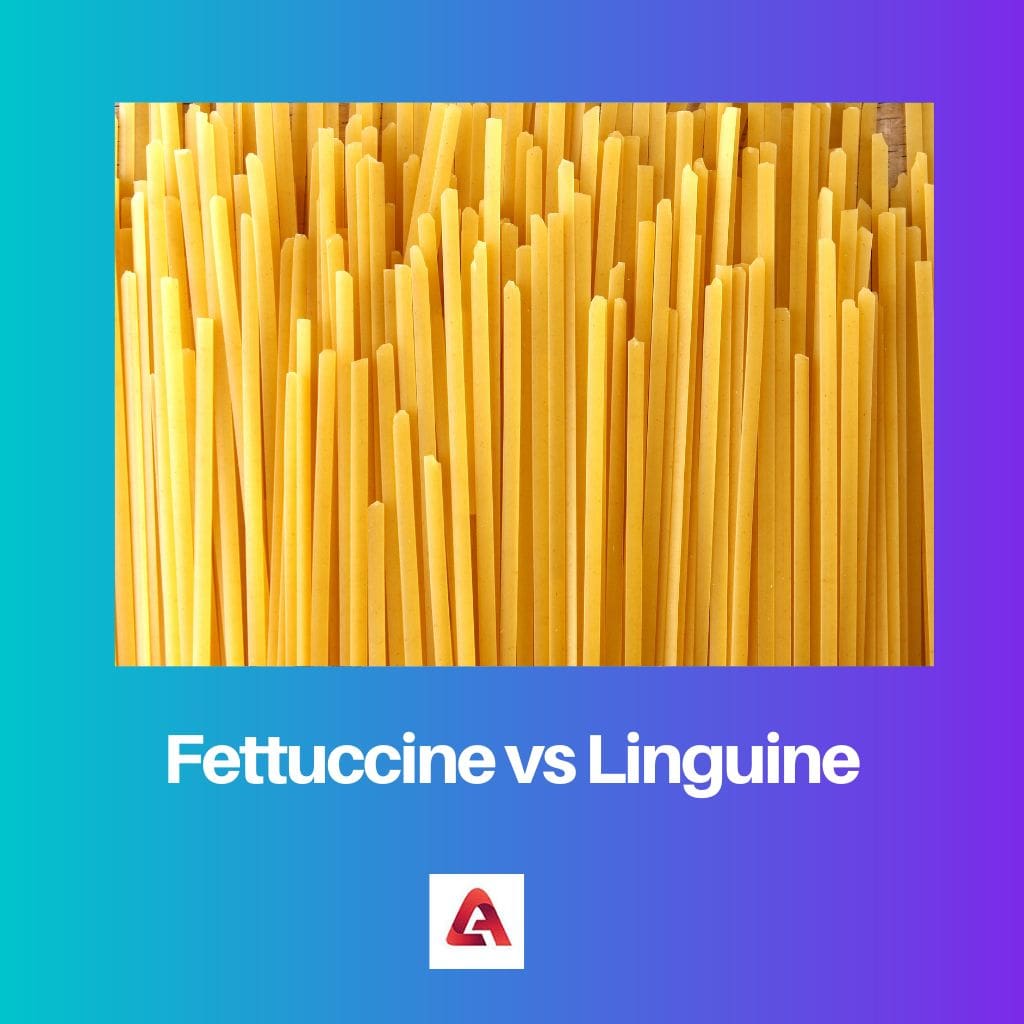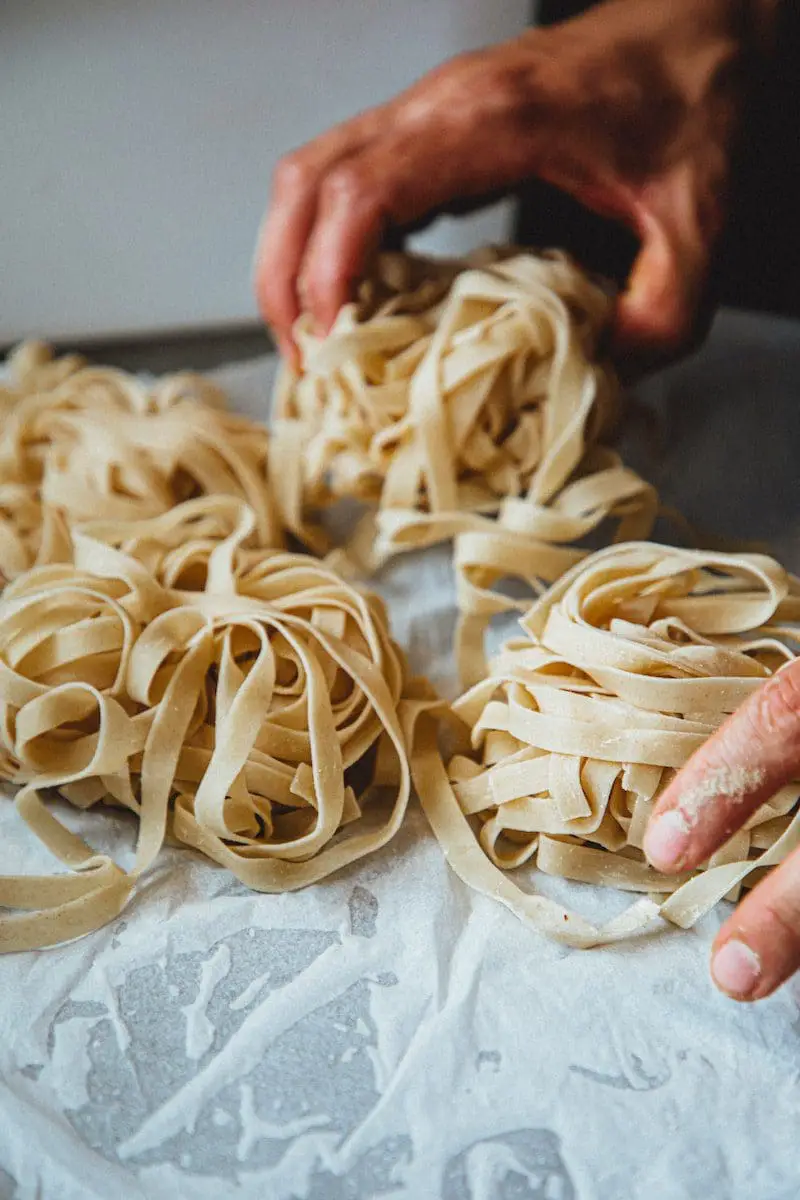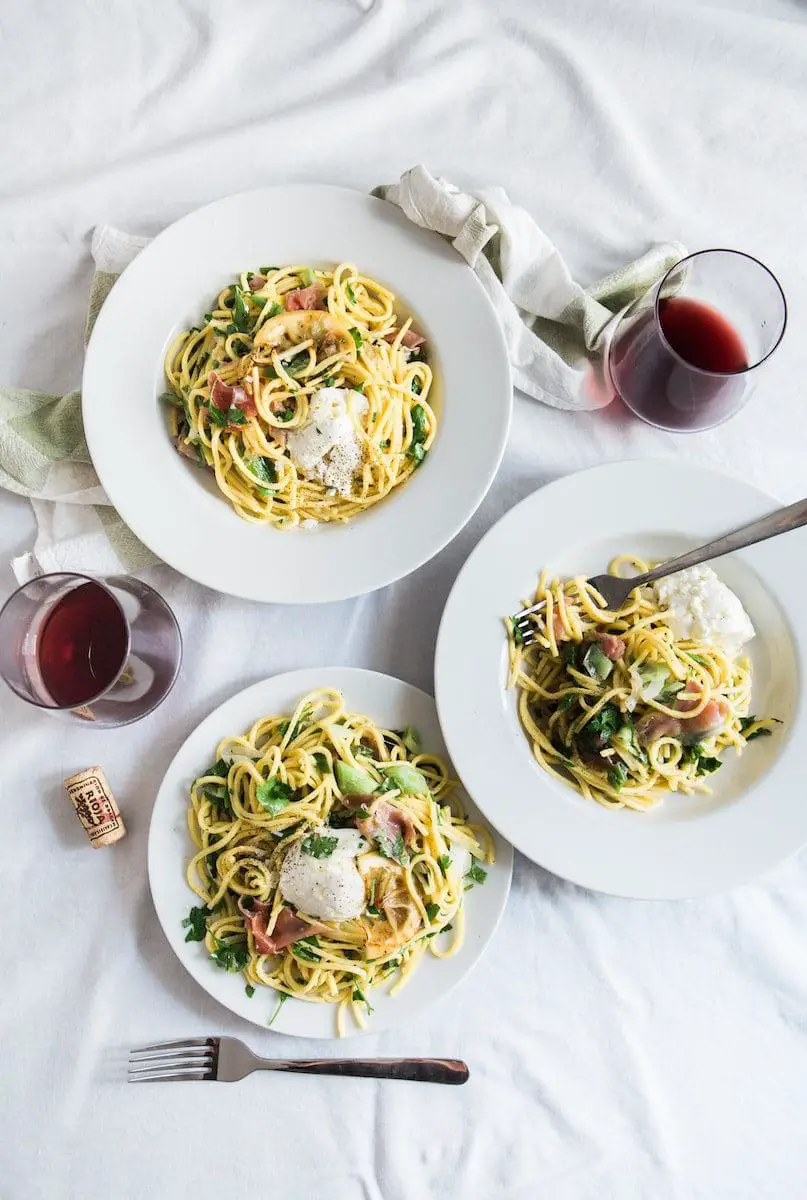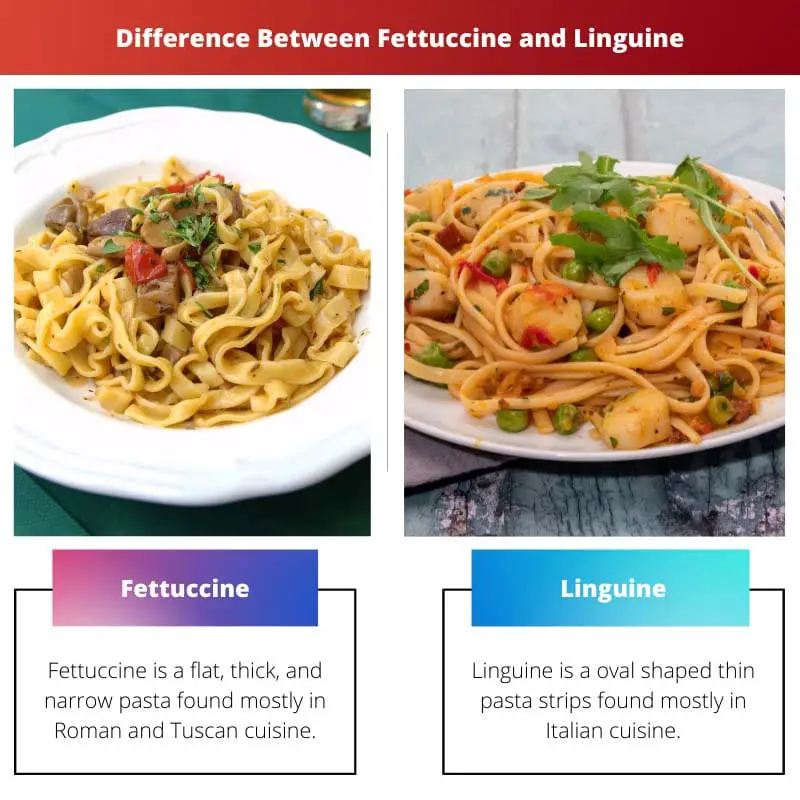Fettuccine boasts wide, flat ribbons, perfect for embracing rich, creamy sauces such as Alfredo, due to its substantial surface area and smooth texture, offering a satisfying bite. In contrast, linguine, with its slender, flattened strands, presents a more delicate texture, ideal for lighter sauces like olive oil-based or seafood dishes, allowing flavors to delicately coat each strand for a refined dining experience.
Key Takeaways
- Fettuccine is a flat, thick, and ribbon-shaped pasta, while Linguine is a long, thin, flattened pasta.
- Fettuccine is wider than Linguine and has a smoother texture, while Linguine has a flatter shape and a slightly chewy texture.
- Fettuccine is served with rich and creamy sauces, while Linguine pairs well with light sauces and seafood.
Fettuccine vs Linguine
Fettuccine is a flat pasta made with egg and flour, giving it a yellowish color and a chewy texture. It is served with creamy sauces and can be used in casseroles and baked dishes. Linguine is a thin, flattened pasta made with flour and water, served with seafood and sauces.

The recipes and accompaniments served with these kinds of pasta are also different. Hence if you are a calorie-conscious person, always go for Linguine pasta.
Comparison Table
| Feature | Fettuccine | Linguine |
|---|---|---|
| Shape | Flat and wide ribbon | Flat and elliptical, slightly narrower than fettuccine |
| Width | Wider (about 1/4 inch) | Narrower (about 1/8 inch) |
| Texture | Chewier and denser | Softer and lighter |
| Cooking Time | Similar (al dente in 8-12 minutes) | Tends to cook slightly faster (due to thinner profile) |
| Typical Pairings | Creamier sauces (alfredo, carbonara), thicker tomato sauces, ragù | Lighter sauces (pesto, garlic and oil, seafood-based), thin tomato sauces |
| Versatility | More versatile, can also be used in soups and salads | Primarily for main courses with lighter sauces |
What is Fettuccine?
Fettuccine is a type of pasta that originates from Italian cuisine, specifically from the central regions of Emilia-Romagna and Tuscany. It is characterized by its long, flat ribbons, similar in shape to tagliatelle but wider. Fettuccine is made from durum wheat flour and water, although some recipes may incorporate eggs for added richness. The dough is rolled out thinly and then cut into strips, resulting in pasta strands that are approximately 6-8 millimeters in width.
Texture and Cooking
Fettuccine has a smooth texture with a slightly chewy bite, making it ideal for pairing with hearty, creamy sauces. Its wide shape allows the sauce to cling to the pasta, ensuring each bite is flavorful and satisfying. When cooked al dente, fettuccine retains a firmness that complements the creaminess of sauces like Alfredo or carbonara. It is important to cook fettuccine properly to maintain its texture, boiling it in salted water until it is tender but still has a slight bite, around 8-10 minutes.
Serving and Pairing
Fettuccine pairs well with a variety of sauces and ingredients. It is served with rich, creamy sauces such as Alfredo, where its broad surface area can hold the sauce effectively. Additionally, fettuccine complements robust meat-based sauces like Bolognese or hearty vegetable sauces. This versatility makes it a popular choice for pasta dishes in Italian cuisine. Fettuccine can also be used in baked pasta dishes, layered with sauce and cheese, and baked until bubbly and golden. When serving fettuccine, it is common to garnish with freshly grated Parmesan cheese and chopped parsley for added flavor and visual appeal.

What is Linguine?
Linguine is a type of pasta that hails from Italian cuisine, specifically originating from the Liguria region in the northwest. Linguine translates to “little tongues” in Italian, referring to its long, narrow shape resembling flattened spaghetti. It is made from durum wheat semolina flour and water, rolled out into thin, flat strands. Linguine is slightly wider and flatter than spaghetti, giving it a distinct texture and appearance.
Texture and Cooking
Linguine has a delicate texture with a slight chewiness, offering a balance between thin spaghetti and broader fettuccine. It cooks relatively quickly, requiring 8-10 minutes in boiling salted water to reach al dente perfection. The flat shape of linguine allows it to absorb sauces more effectively than round pasta shapes, ensuring each strand is evenly coated. It pairs exceptionally well with lighter sauces such as olive oil-based sauces, seafood, pesto, or fresh tomato sauces. When cooked al dente, linguine retains a pleasant firmness, providing a satisfying bite in every mouthful.
Serving and Pairing
Linguine’s versatility makes it a popular choice for a wide range of pasta dishes. Its delicate texture and flat shape make it perfect for lighter sauces, allowing the flavors to coat each strand evenly. Linguine pairs exceptionally well with seafood, such as shrimp, clams, or scallops, in dishes like linguine alle vongole (linguine with clams) or linguine ai frutti di mare (linguine with mixed seafood). It also complements vegetable-based sauces, herbs, and cheeses, offering endless possibilities for creative pasta dishes. When serving linguine, it is common to garnish with freshly chopped herbs, grated Parmesan cheese, or a drizzle of extra virgin olive oil to enhance its flavor profile.

Main Differences Between Fettuccine and Linguine
- Shape:
- Fettuccine: Wide, flat ribbons.
- Linguine: Long, narrow strands, slightly flattened.
- Texture:
- Fettuccine: Smooth texture, slightly chewy.
- Linguine: Delicate texture, with a slight chewiness.
- Suitability for Sauces:
- Fettuccine: Ideal for rich, creamy sauces due to its broad surface area.
- Linguine: Best paired with lighter sauces like olive oil-based, seafood, or fresh tomato sauces, allowing flavors to coat each strand evenly.
- Cooking Time:
- Fettuccine: Cooks in approximately 8-10 minutes.
- Linguine: Similar cooking time of around 8-10 minutes.
- Culinary Pairings:
- Fettuccine: Commonly served with hearty, meat-based sauces such as Alfredo or Bolognese.
- Linguine: Often paired with seafood, pesto, or vegetable-based sauces for a lighter, fresher taste.
- Region of Origin:
- Fettuccine: Originates from central regions of Italy, particularly Emilia-Romagna and Tuscany.
- Linguine: Hails from the Liguria region in northwest Italy.





